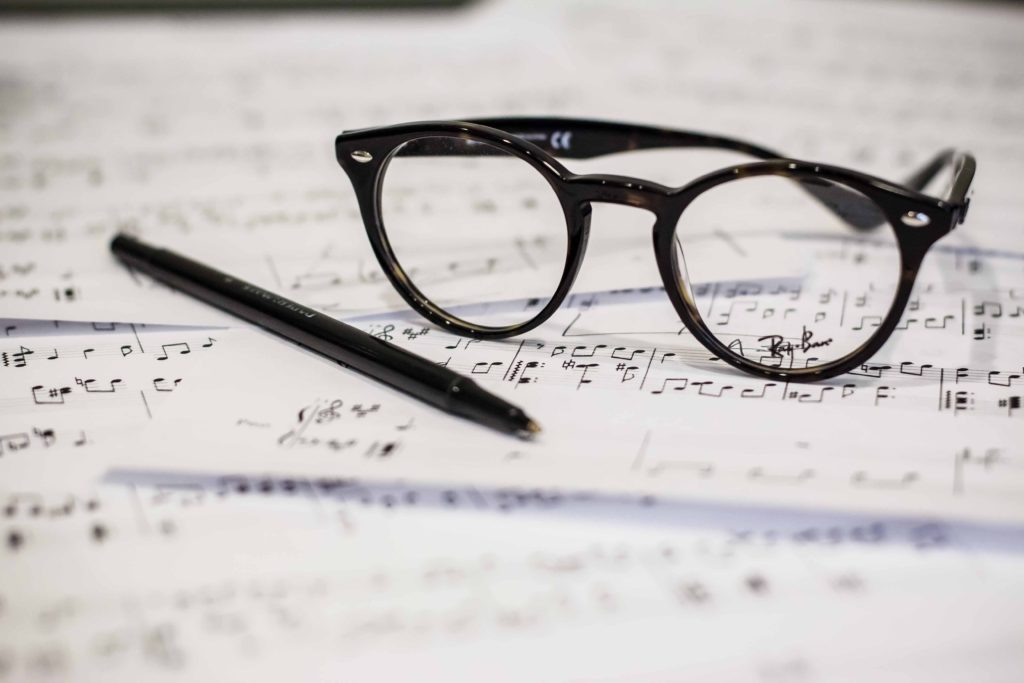
It happens to the best of us… you’ve had a wonderful lesson playing pieces that your student enjoys, maybe some scales, perhaps some sight reading and then right at the end we suddenly remember that we need to include music theory. The Grade 5 theory exam always has a way of creeping up on us and always seems to appear, somehow out of nowhere, when we get to Grade 6 practical. The amount of times I have seen this happen is crazy… It really is so easy to get carried away teaching our instrument! However, it is vital to include music theory if we are to create well-rounded musicians.
For those of you that don’t know already, Grade 5 theory is a requirement before you are able to take your ABRSM Grade 6 practical on any instrument.
Personally, I think this is an excellent requirement as it ensures that those students who progress to the higher-level grades have a deep understanding of music, before progressing onto the more challenging repertoire and scales needed for the high grades. Having knowledge of the circle of fifths definitely makes learning those scales easier!
However, for some reason all students seem to resent learning music theory. I think it’s because we’re so used to giving our students a book, setting exercises each week and not giving it any relevance to their instrument! Music theory does not need to be treated like a maths lesson (although maths can 100% be fun!).
How can we include music theory into our lessons without the dreaded use of that exercise book?
1. Always Remember to include an element of music theory in every lesson!
This is so important and is something that it often not done. By doing this, learning music theory will not be a horrible surprise when students get to the higher grades! Music theory is not an easy topic to grasp, to be honest, some concepts in music theory are just as hard as some maths concepts… yet we expect our students to just complete a few books in a couple of terms and ace an exam! This level of panic creates an element of dread surrounding music theory learning. Music theory should be talked about in every lesson and be used as a tool to create more enjoyment when playing our pieces! With deeper understanding comes deeper enjoyment!
2. Use the circle of fifths
Use your circle of fifths every lesson…Hear me out! The circle of fifths can be fun! Sometimes my students don’t even realise we are studying music theory when I bring out the circle of fifths… this is because we do it in relation to their scales, a piece of sight reading, a long-term piece of repertoire they are playing… The circle of fifths can be used to play games to pick the scale you will practise; it helps to know what scale your piece is in… students often thrive when they are challenged and by introducing this into their lessons you will find that they love it!
3. improvise!
Use improvisation to help understand theory concepts further! Pick an element of music theory you would like your student to understand. This could be time signatures, note groupings, key signatures… anything! And see if you can improvise using this element! By doing this you will find that your students actually develop a deeper knowledge of the theory concept. By applying their knowledge, students feel more confident!
4. Compose!
Further on from improvisation, you can also use composition! I will sometimes use a large white board and we will compose something together or this can simply be done in their note book! Or if you happen to be online teaching, there are some great whiteboard features where you can collaboratively compose together! Again, pick an element of music theory you are want them to understand and see if you can use this to help write a piece!
5. Ask questions
Ask questions, start a discussion! Before learning a new piece, or before revisiting an old piece, have a conversation about the elements you can see in that piece. Explore these elements, perhaps play the scale that the piece is in… maybe see if you can find another piece in the same key, or with the same time signature! This could even be a duet! Or… apply the above two points, improvisation and composition!
6. Fun worksheets
It is also more than ok to use worksheets! But why not create your own, or use themed worksheets depending on the time of year. Check out our collection of free worksheets, these are a super fun way to get more theory in your lessons. This doesn’t need to simply be the standard workbook. Using different sources will hugely help in your student’s motivation. It also means you can tailor each lesson to each specific student rather than working through a book! Also make use of online resources, an interactive circle of fifths, quizzes… so many options!
How do you inject music theory into your lessons?
These are just some of the ways you can inject music theory into your lessons. This can be gradually introduced right from the beginning meaning that you and your students don’t have that surprise when they get to Grade 5 and suddenly want to take Grade 6 practical!
Often Grade 5 practical sees a lot of instrumentalists quitting specifically for the reason they don’t want to do their theory… don’t let this be the case with your students!
Let me know how you introduce theory in to your lessons! And if you are not sure where your students are in their music theory knowledge, be sure to take our time signature quiz!
